#high efficiency particulate air filter
Explore tagged Tumblr posts
Text
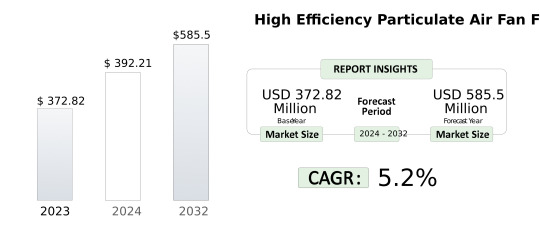
High Efficiency Particulate Air Fan Filter Unit (HEPA FFU) Market Size
High Efficiency Particulate Air Fan Filter Unit (HEPA FFU) market in the United States was valued at approximately USD 372.82 million in 2023. It is expected to grow steadily, reaching around USD 392.21 million by 2024 and further expanding to about USD 585.5 million by 2032, reflecting a compound annual growth rate (CAGR) of 5.2% over the forecast period. This growth is driven by increasing regulatory focus on air quality standards, particularly in sectors such as healthcare, biotechnology, and cleanroom manufacturing, where stringent contamination control is critical. The ongoing advancements in filtration technology and heightened awareness of indoor air quality also contribute significantly to the market's expansion in the U.S.
View Full Report On:- https://www.globalgrowthinsights.com/market-reports/high-efficiency-particulate-air-fan-filter-unit-hepa-ffu-market-101927
#High Efficiency Particulate Air Fan Filter Unit (HEPA FFU) Market Size#High Efficiency Particulate Air Fan Filter Unit (HEPA FFU) Market Share#High Efficiency Particulate Air Fan Filter Unit (HEPA FFU) Market
0 notes
Text
Reference preserved in our archive (Daily updates!)
TL;DR: Corsi-Rosenthal Boxes deliver quality air filtration at upwards of 30% higher air exchanges than comparable HEPA filters on the market. Build 'em for covid. Build em' for wildfire smoke. Build 'em for allergies. Build 'em to clean the air.
Abstract Filtration performance of do-it-yourself (DIY) box fan filters deployed across a university campus was assessed over an academic year. Four DIY air filters were constructed from box fans and air filters with a minimum efficiency reporting value (MERV) of 13 and deployed in four spaces (two laboratories that include sources of particles and two offices). They were operated 9 hours daily with a programmable timer and were continuously monitored with power meters. Particle concentrations in the spaces were continuously monitored with low-cost nephelometers. The particle size dependent clean air delivery rate (CADR) and single pass filtration efficiency for each box was measured in a laboratory before deployment and every 10 weeks, for a total of five measurements over 40 weeks. We find that these DIY box fan filters maintain robust performance over time, with each air filter maintaining at least 60% of its initial CADR at the end of the 40 week study even with daily operation in environments with modest particle concentrations. CADR values for particles of 1.0–3.0 μm optical diameter averaged 34% higher than CADR values for 0.35–1.0 μm particles, aligning with MERV 13 filter size-dependent filtration expectations. Reductions in CADR over time were attributed to a reduction in filtration efficiency, likely due to a loss of filter electrostatic charge over time. There was no strong indication that increased resistance due to particle accumulation on filters appreciably decreased flow rates over time for any of the fans. The long-term robustness of DIY box fan air filters demonstrates their validity as a cost-effective, high performance, alternative to portable high efficiency particulate air (HEPA) filters.
#CR box#air filter#clean air#air quality#diy air filtration#covid news#mask up#covid#pandemic#wear a mask#covid 19#public health#still coviding#coronavirus#wear a respirator#sars cov 2#covid conscious#covid is airborne#covid isn't over#covid pandemic#covid19#covidー19#long covid
171 notes
·
View notes
Note
Do you have any examples for what kind of air filtration places should be using? And how do I go about asking what they’re using? I’ve been wanting to contact my library to ask, but I don’t know what word to use.
(DISCLAIMER: this answer is for the USA. air filter regulations and certification vary country-to-country, and i live in the USA. please do not assume any of this--beyond the basic scientific information--is true if you are not in the USA.)
so the short answer is that in order to be effective against COVID (and most other viruses), your filter must capture particles in the size range of 0.1-1 microns. if the minimum capture size is larger than that range, it will not trap viral particles. just as importantly, it needs an appropriate Clean Air Delivery Rate (CADR) for the size of the room it's filtering; you can learn about how to calculate CADR and other details in the linked documents here, but the short version is your purifier's CADR should be equal to at least 2/3rds of the room's total area (for example, a room of 120 square feet requires a minimum CADR of 80), and rooms with ceilings higher than 8 feet require a higher CADR-to-area ratio than that. most wisdom recommends aiming for 5 complete air changes per hour, however, i've been told that this can be overkill.
the most commonly-used air filters in the USA which filter particles in the correct micron size range are HEPA filters. HEPA stands for High-Efficiency Particulate Air [filter]. you can learn a little about HEPA filters on the EPA website here. because of how air purifier testing and distribution work, the easiest question to ask to determine if something filters the correct micron size range is "is this a certified HEPA filter?" there are many filters being marketed as "HEPA-type" filters which do not filter microns in the correct size range. make sure you ask if something is specifically a HEPA filter and not a "HEPA-type" filter.
other than asking if it's a HEPA filter, i would suggest asking the following questions:
is the CADR of your purifiers rated for your room size[s]?
if they don't know: who can i talk to in order to get that information?
if they don't know that: what is the CADR of your air purifier[s] and what is the square footage of the room[s] they are in? (you can calculate whether or not it's rated appropriately to size yourself.)
the CADR should be on the packaging and info booklets that come with the air purifier, but if whoever you're talking to can't access any of that information, try asking for the specific brand and model of the purifier. if you look it up, you should be able to easily find its CADR on the manufacturer's online listing.
hope this helps! let me know if i can expand on anything or explain anything more clearly.
44 notes
·
View notes
Text
Mold Remediation Process
Mold remediation is the process of removing mold and preventing its return. It's crucial for maintaining a safe and healthy environment, especially in homes where mold can trigger allergies and respiratory issues. Many people might think they can handle this on their own, but the mold remediation process involves specific steps to ensure all mold is effectively removed.
The process can vary depending on the extent of the mold growth and the type of materials affected. Professional mold remediation experts are trained to identify the source of moisture and create a tailored plan to eliminate the mold safely. In this guide, I'll break down the steps involved in the mold remediation process so you can understand what to expect.

Steps in the Mold Remediation Process
When dealing with mold, it’s essential to follow a structured approach. Below are the main steps in the mold remediation process.
Inspection: A thorough inspection is conducted to identify the extent of the mold growth.
Containment: The affected area is sealed off to prevent mold spores from spreading.
Filtration: High-efficiency filters are used to capture mold spores from the air.
Cleaning and Removal: Mold-damaged materials are cleaned or removed altogether.
Restoration: Any structures or materials removed are repaired or replaced.
Inspection and Assessment
The first step in the remediation process is a detailed inspection. This includes checking for visible mold and assessing moisture levels in the area. A professional will use tools like moisture meters and thermal imaging to locate hidden mold. If you suspect mold in your home, it’s important to act quickly, as mold can spread rapidly in damp conditions.
After the inspection, a mold assessment report is created. This document details the findings and serves as a guide for the next phases of the remediation process. Understanding the specific type of mold present can also be important for determining the best remediation strategy.
Containment and Air Filtration
Once the assessment is complete, containment measures are put in place. This typically involves sealing off the area with plastic sheeting to prevent spores from traveling to other parts of the building. It’s an essential step to ensure safety during the remediation process.
Alongside containment, air filtration systems are employed. These systems use high-efficiency particulate air (HEPA) filters to trap mold spores and other contaminants, improving air quality and reducing the risk of airborne spores spreading. This helps maintain a safe environment for both the workers and the residents.
Cleaning and Restoration
After containment is established, the next phase focuses on cleaning and removing the mold. This usually involves scrubbing surfaces with specialized cleaning solutions and, in some cases, removing materials such as drywall or carpeting that are heavily infested. If you're searching for a mold inspection near me, our experts are here to help. It’s important to ensure that all visible mold is eliminated to prevent future growth.
Once everything is cleaned, restoration steps begin. This can include repairing surfaces, replacing drywall, and ensuring the area is dry and free of moisture. Addressing underlying issues such as leaks or humidity problems is essential to prevent mold from returning.
Preventing Future Mold Growth
After the remediation process, it’s essential to take proactive measures to prevent mold from coming back. This includes controlling humidity levels, fixing leaks promptly, and ensuring proper ventilation in areas prone to moisture, such as bathrooms and kitchens. Regularly inspecting these areas can help catch potential issues before they escalate.
Consider using dehumidifiers and air purifiers to maintain a healthier indoor environment. Simple steps like keeping gutters clean and ensuring drainage systems work properly can also go a long way in preventing mold growth. Staying vigilant will help keep your living space safe and mold-free!
Conclusion
The mold remediation process is a vital practice for maintaining a healthy home. By understanding the steps involved—from inspection to prevention—you can take informed actions to manage mold effectively. If you suspect mold in your home, don’t hesitate to consult professionals who can help. Taking quick action is key to keeping your environment safe!
In summary, mold remediation is not just about removing mold; it’s about ensuring a safe and healthy living space. By following the steps outlined here, you can protect your home and loved ones from the harmful effects of mold.
For professional mold remediation services or to schedule an inspection, don’t hesitate to Contact Us:
Phone: 1-855-947-6167
Email: [email protected]
Address: 99 Hudson St, New York, NY 10013, USA
youtube
Frequently Asked Questions (FAQs) about Mold Remediation
What is mold remediation? Mold remediation is the process of removing mold and preventing its return to maintain a safe and healthy environment.
What are the steps involved in the mold remediation process? The main steps include inspection, containment, filtration, cleaning and removal, and restoration.
Why is inspection important in mold remediation? Inspection helps identify the extent of mold growth and assess moisture levels, guiding the next phases of the remediation process.
How is the affected area contained during mold remediation? The affected area is sealed off using plastic sheeting to prevent mold spores from spreading to other parts of the building.
What methods are used to improve air quality during mold remediation? Air filtration systems with high-efficiency particulate air (HEPA) filters are employed to trap mold spores and other contaminants.
What steps can be taken to prevent future mold growth? Controlling humidity levels, fixing leaks promptly, ensuring proper ventilation, and regular inspections can help prevent mold from returning.
Why should I consider hiring professionals for mold remediation? Professional mold remediation experts are trained to identify moisture sources, create tailored plans, and ensure all mold is effectively removed safely.
Follow Us:
Blogger Weebly Twitter Gravatar Disqus Google Sites YouTube About.me
2 notes
·
View notes
Text
Filtering the Air: A Comprehensive Guide to Air Filters
Air filters are essential components in various applications, from industrial settings to our homes. They play a crucial role in maintaining air quality, protecting equipment, and ensuring optimal performance. In this blog post, we'll delve into the world of air filters, exploring different types and their specific applications.
Understanding Air Filters
Air filters are designed to remove contaminants from the air, such as dust, pollen, bacteria, and other airborne particles. They work by trapping these particles in their filtration media, preventing them from passing through.
Types of Air Filters
Ceiling Filters for Paint Booths:
Purpose: These filters are specifically designed to capture overspray and other airborne contaminants generated during the painting process.
Benefits: They help maintain a clean and safe working environment, improve paint quality, and reduce environmental impact.
Air Filters:
Purpose: These filters are used in a wide range of applications, including HVAC systems, air purifiers, and industrial processes.
Types:
Pleated Filters: Efficiently capture larger particles.
HEPA Filters: High-Efficiency Particulate Air filters can capture extremely small particles, including bacteria and viruses.
Carbon Filters: Remove odors and gases from the air.
Engine Air Filters:
Purpose: These filters protect the engine from dust, dirt, and other debris that can cause damage and reduce performance.
Types:
Paper Filters: Common and affordable, but less efficient.
High-Efficiency Filters: Offer better filtration and longer life.
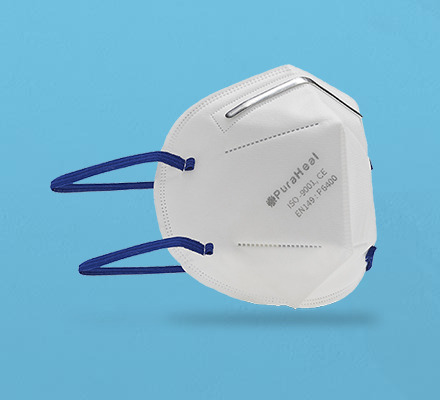
H12 HEPA Filter: A High-Performance Solution
H12 HEPA filters are a type of high-efficiency particulate air filter that can capture 99.95% of airborne particles, including those as small as 0.3 microns. They are commonly used in cleanroom environments, hospitals, and other critical applications where air quality is paramount.
Pocket Filters Media and HEPA Filter Media
Pocket Filters Media: This type of filter media is pleated into pockets to increase surface area and filtration efficiency. It is commonly used in HVAC systems and industrial applications.
HEPA Filter Media: This high-performance filter media is made of fine fibers that trap even the smallest particles. It is used in HEPA filters and other high-efficiency air filtration systems.
Conclusion
By understanding the different types of air filters and their specific applications, you can make informed decisions to improve air quality and protect your health and equipment. Whether you need a ceiling filter for your paint booth, an air filter for your home, or an engine air filter for your vehicle, there is a filter solution to meet your needs.
[email protected] 0124-4816111 Corporate Office: Park Non Woven Pvt. Ltd., Gurugram, HR
#pp + pet felt#plastic extrusion profile#light weight insulation#pet acoustic panel#non woven battery gaunlets#breather fabric#compressor felt#fiber glass felt#high efficiency media#lint free wipes
2 notes
·
View notes
Text

3-stage powerful filtration: The Invisible Guardians of Your Air
🌟 What is HEPA?
HEPA (High-Efficiency Particulate Air) is a technology capable of filtering at least 99.97% of particles measuring 0.3 microns in the air. This means it can effectively capture extremely small particles such as pollen, dust, smoke, and even bacteria and viruses.
🔍 How It Works:
Physical Interception: As air passes through the filter, larger particles are directly trapped by the fibers.
Inertial Collision: Particles in the air collide with the fibers due to changes in speed and stick to them.
Diffusion: Very small particles, especially those less than 0.1 microns, change direction by colliding with air molecules, eventually being captured by the fibers.
Electrostatic Attraction: Some HEPA filters enhance the capture of extremely small particles by adding an electrostatic layer.
🌍 Why Choose HEPA? If you have high indoor air quality requirements, such as families with allergy sufferers, infants, or the elderly, or if you live in areas with poor air quality, HEPA filters provide a reliable air purification solution.
💡 Jerdazen employs a triple protection approach in its filters, and the HEPA filters meet industry standards, so you need not worry about filtration efficiency.
4 notes
·
View notes
Text
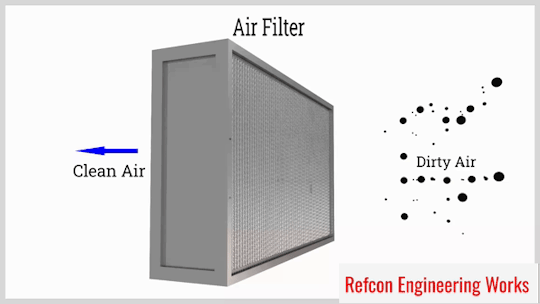
Introduction to Refcon Engineering Works
Refcon Engineering Works boasts a rich legacy of delivering top-notch air filtration products and services. With years of experience and expertise, the company has earned a reputation for reliability, efficiency, and customer satisfaction.
Importance of Air Filters
Air filters play a pivotal role in removing airborne particles, contaminants, and pollutants from the air. They ensure cleaner and healthier indoor air quality, contributing to the well-being of occupants and the longevity of equipment.
Types of Air Filters Offered: Refcon Engineering Works offers a comprehensive range of air filters tailored to meet specific industry requirements. These include:
HEPA Filters: High-Efficiency Particulate Air (HEPA) filters are renowned for their exceptional filtration efficiency, capable of capturing even the smallest particles with high precision.
Pleated Filters: Pleated filters are designed to maximize surface area, allowing for increased particle capture and prolonged filter life.
Panel Filters: Panel filters are versatile filters suitable for various applications, offering reliable performance and ease of installation.
Manufacturing Process of Air Filters: Refcon Engineering Works employs advanced manufacturing processes to ensure the highest quality standards for its air filters. This includes meticulous material selection, precise fabrication techniques, and stringent quality control measures.
Applications of Air Filters: Air filters manufactured by Refcon Engineering Works find extensive applications across diverse industries, including:
HVAC Systems: Air filters are integral to HVAC systems, ensuring efficient air circulation and maintaining optimal indoor air quality.
Industrial Processes: In industrial settings, air filters play a crucial role in safeguarding equipment and processes from contamination, thereby enhancing productivity and product quality.
Automotive Sector: Air filters are essential components of automotive engines, preventing dust and debris from entering critical engine parts and ensuring smooth operation.
Benefits of Using Air Filters: The utilization of high-quality air filters offers several benefits, including:
Improved Air Quality: Air filters effectively remove pollutants and allergens from the air, leading to cleaner and healthier indoor environments.
Enhanced Equipment Performance: By preventing the accumulation of dust and debris, air filters help prolong the lifespan and improve the performance of HVAC systems and machinery.
Health Benefits: Clean indoor air, facilitated by efficient air filtration, promotes better respiratory health and reduces the risk of airborne illnesses.
Refcon Engineering Works’ Commitment to Quality
Refcon Engineering Works prioritizes quality in every aspect of its operations, from product design and manufacturing to customer service. The company adheres to stringent quality control measures to ensure the reliability and durability of its air filtration products.
Customer Satisfaction and Testimonials
Refcon Engineering Works takes pride in its commitment to customer satisfaction. Positive testimonials from satisfied clients attest to the company’s dedication to delivering superior products and exceptional service.
Sustainability Initiatives
As part of its corporate responsibility, Refcon Engineering Works is dedicated to implementing sustainable practices in its manufacturing processes, minimizing environmental impact, and promoting a greener future.
Global Reach and Presence
With a strong global presence, Refcon Engineering Works serves clients across various industries worldwide, providing tailored air filtration solutions to meet diverse needs and requirements.
After-Sales Support and Services
Refcon Engineering Works offers comprehensive after-sales support and services, including installation assistance, maintenance programs, and technical support, ensuring optimal performance and longevity of its air filtration systems.
Competitive Advantage
The company’s commitment to innovation, quality, and customer satisfaction gives it a competitive edge in the air filtration industry, making it a preferred choice for businesses seeking reliable filtration solutions.
Industry Recognition and Awards
Refcon Engineering Works has garnered recognition and accolades for its contributions to the air filtration industry, further solidifying its reputation as a market leader.
Conclusion
In conclusion, Refcon Engineering Works stands as a trusted name in the field of air filtration, offering high-quality products, innovative solutions, and unmatched customer service. With a focus on quality, reliability, and sustainability, the company continues to exceed customer expectations and set industry standards.
FAQs
1. Are air filters suitable for residential use? Yes, air filters are commonly used in residential HVAC systems to improve indoor air quality and protect equipment.
2. How often should air filters be replaced? The frequency of air filter replacement depends on various factors, including usage, environment, and the type of filter. It is recommended to follow manufacturer guidelines for optimal performance.
3. Can air filters help reduce allergies and asthma symptoms? Yes, high-quality air filters can effectively capture airborne allergens and pollutants, thus reducing allergy and asthma symptoms for occupants.
4. Do air filters contribute to energy savings? Yes, by maintaining clean air circulation and preventing equipment inefficiencies, air filters can contribute to energy savings and lower utility costs.
5. Are custom air filtration solutions available? Yes, Refcon Engineering Works offers customized air filtration solutions tailored to specific industry requirements and applications.
Contact us right away if you want to learn more about our wide range of Air Filter products. Call us at +91–9810388086 or send an email to [email protected], we are India’s largest Air Filter Manufacturers and Suppliers.
#air filter#Air Filter Manufacture#Air Filter Supplier#Air Filter Manufacturers in India#Air Filter Suppliers in India
1 note
·
View note
Text
wtf ive seen posts on here like NobOdY wEArs mAsKs oN aIRplAnEs AnyMOre!! and i was like pshhh sensationalist nonsense
but wtf. now i am at the airport and for real, why is nobody wearing a mask? Also the AQI is abysmal right now. Visibly bad. And no one is masking??
Masks are such a good way to keep your lungs safe, and to keep your immune system safe in high risk settings.
If you don’t smoke bc you care about your lungs… why would you start inhaling huge amounts of smoke when the AQI is > 100? The cutoffs for “sensitive groups” are arbitrary. Higher # = more bad.
If you DO smoke, don’t you want to save that good good lung capacity for getting toasted? lol
Idk if my followers know, but I literally founded a mask company during the pandemic. Our device was recommended by top air quality experts and I helped write legislation to help workers pick the best masks during COVID. Our device is ASTM 3502 listed. I know what I’m talking about.
One common misconception about masks is that you need to replace them after every use. This is surprisingly false. As long as it doesnt get wet or dirty the meltblown fabric doesnt degrade significantly.
Here are my mask recs:
Best balance of comfort and performance: Air Pop
This was designed for pollution and illness protection in East Asia. These guys are legit.
Most cost effective + high performance: Fix The Mask
$15 up front cost + $0.30 for each replacement “filter” (you just use a surgical mask). Full disclosure, this is my company, but if you need a discount, email [email protected]. I will personally hook you up.
Most typically recommended: 3M Aura
this is what most serious masking people will recommend. It works well on most faces, but for me the rubber over the head straps mess up my hair too much.
3M Aura Particulate Respirator https://a.co/d/8mbNmml
I am super lazy, what is the minimum I can do? Any surgical mask with 90%+ filteation efficiency
A regular surgical mask will give you ~40% inward protection per studies in JAMA and other places (Clapp et. al) and others. It won’t give you 90% protection bc air gets around the sides, but it’s better than nothing.
How big a difference is 40% filtration? This is the best visual I’ve seen to illustrate the difference:
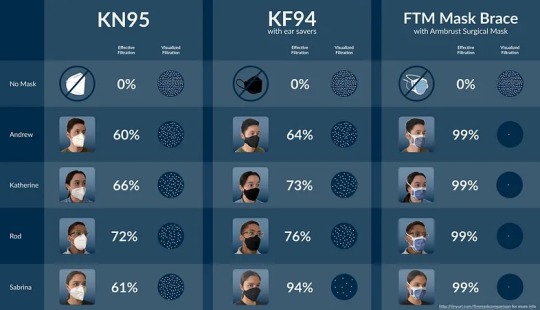
Don’t be a dick, and don’t be an idiot. Use a mask ffs.
3 notes
·
View notes
Text
Affordable High-Quality Masks
Last Updated September 4, 2023 (Note: Some products on this list occasionally change prices, and I may not have updated the price yet.)
KN95
WWDOLL KN95
Color Options: Yes Size Options: Yes GB 2626-2019: Yes Manufacturer: Chengde Technology Co. Filtration Test (Adults): 98.63% (Mask Nerd) Filtration Test (Kids): 98.50% (Armbrust)
Adults
Amazon: $17.77 for 25, $13.02 - $22.27 for 50
Amazon.com: WWDOLL KN95 Face Mask 25 Pack, 5-Layers Mask Protection, Breathable KN95 Masks White : Clothing, Shoes & Jewelry
Amazon.com: KN95 Face Mask 50 Pack, WWDOLL KN95 Masks 5-Layer Breathable Mask with Elastic Earloop and Nose Bridge Clip, Disposable Respirator Protection Against PM2.5 Black : Tools & Home Improvement
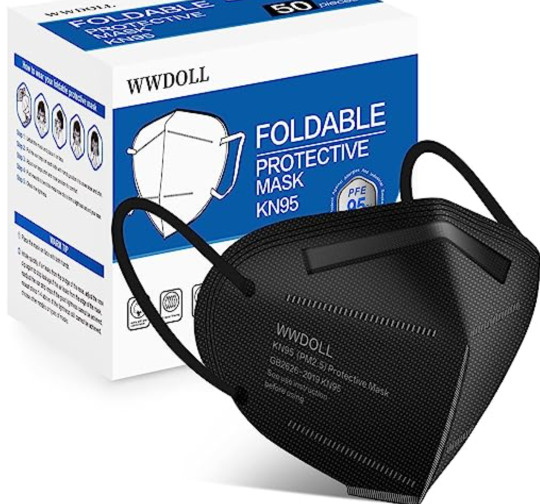
Kids
Amazon: $17.77 - $24.74 for 50
Amazon.com: WWDOLL Kids KN95 Face Mask 50 Pack, 5-Layers Breathable KN95 Masks for Children, Black : Tools & Home Improvement
WWDOLL Kid KN95 Face Mask 50 Pack, 5-Layers Breathable KN95 Masks, Multicolored - Amazon.com

Hotodeal KN95
Color Options: Yes Size Options: No GB 2626-2019: Yes Manufacturer: Chengde Technology Co. Filtration Test: 99.67% (Armbrust)
Amazon: $34.19 for 60, $43.69 for 120
Amazon.com: Hotodeal KN95 Face Mask 20 PCS,5 Layers Cup Dust Mask Against PM2.5 from Fire Smoke, Dust, for Men, Women, Essential Workers(White) : Tools & Home Improvement

HUHETA KN95
Color Options: Yes Size Options: Yes GB 2626-2019: Uncertain (Assume No) Manufacturer: Guangdong Nuokang Medical Technology CO., Ltd Filtration Test (Adults): 99.70% (Armbrust) Filtration Test (Kids): No data
Adults
Amazon: $11.39 - $14.25 for 30, $14.39 - $21.84 for 60
HUHETA KN95 Face Masks, Packs of 30 Individually Wrapped, 5-Ply Breathable and Comfortable Safety Mask, Filter Efficiency Over 95%, Protective Cup Dust Masks Against PM2.5 (Black Mask): Amazon.com: Tools & Home Improvement
HUHETA KN95 Face Mask 60 PCs, 5-Ply Safety Masks for Men & Women, Filter Efficiency>=95% (Black Mask): Amazon.com: Tools & Home Improvement
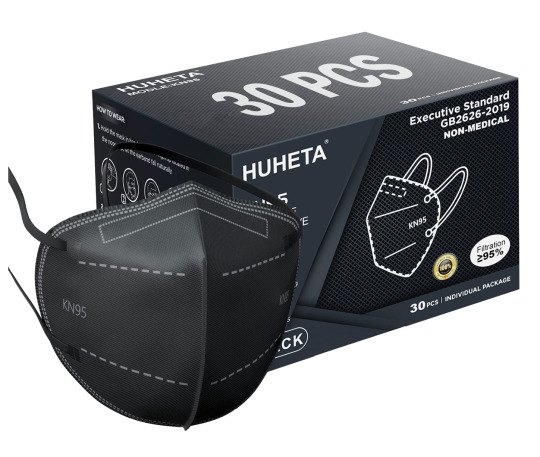
Kids
Amazon: $11.39 - $14.24 for 30
Kids KN95 Face Masks for Children, Packs of 30 KN95 Mask for Kids, KN95 Black Mask for Girls Boys with Breathable 5-Layers Protection and Adjustable Earloop for School, Park, Indoor, Outdoor Use: Amazon.com: Tools & Home Improvement
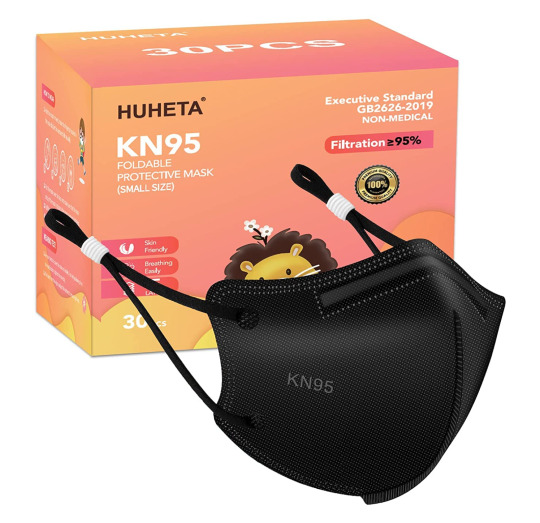
NOTE: If a KN95 mask is too big for you, or you can feel air leaks when worn, there are products that can bring the ear loops further behind your head or tighten the front for a better seal. N95s are recommended first for an improved fit/seal if you can access them.
Examples:
Fix the Mask: https://www.fixthemask.com
Lanyard: Amazon.com: ZASIE Face Mask Holder, Face Mask Lanyard for Kids and Adults, Face Mask Extender Strap Holder, Face Mask Tightener, 5 Pack : Clothing, Shoes & Jewelry
Silicone Buttons: Amazon.com: 4 PCS Extended Silicone Bands Anti-Tightening Strap for Masks to Prevent Ear Pain,Adjustable Comfort mask Grips Extension Buckle Holder Hook Ear Strap,4 Color : Health & Household
Velcro: Amazon.com: Maskie Face Mask Holder, Ultra-Light and Breathable Mask Ear Saver with Adjustable Gripper, Comfortable Mask Strap, Wear It in Multiple Ways, Reusable Mask Extenders/Ear Savers, 2.9 g - URSA Straps : Health & Household
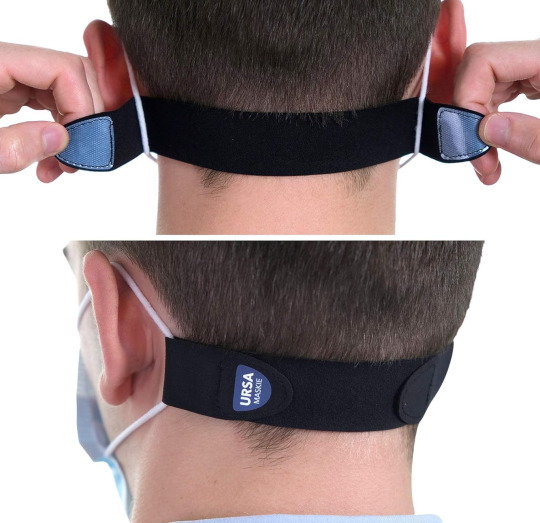
N95
Blox Duckbill N95
Color Options: No Size Options: No NIOSH: Yes Manufacturer: ivWatch
Blox Direct: $12.50 for 50 (~$28 after shipping + tax)
blox N95 (part BLX-9501, medical use) | BloxDirect.com
Project N95: $15 for 50 (~$30 after shipping + tax)
Duckbill Blox N95 Masks Universal (projectn95.org)

3M Aura 9205
Color Options: No Size Options: No NIOSH: Yes Manufacturer: 3M
Amazon: $12 for 20, $129.99 for 440
Amazon.com: 3M Aura Particulate Respirator 9205+, N95, Pack of 20 Disposable Respirators, Individually Wrapped, 3 Panel Flat Fold Design Allows for Facial Movements, Comfortable, NIOSH Approved : Tools & Home Improvement
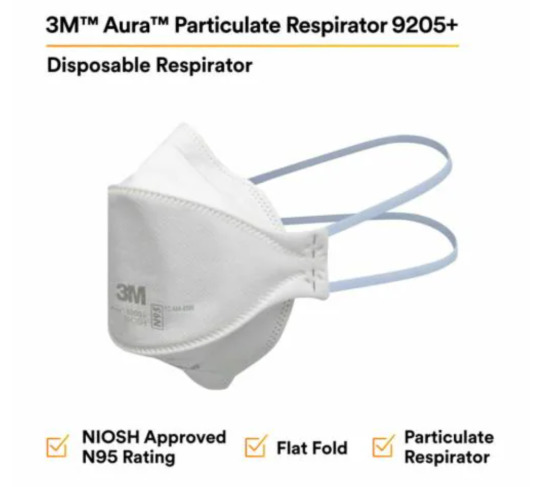
3M VFlex 9105
Color Options: No Size Options: Yes NIOSH: Yes Manufacturer: 3M
Office Depot: $28.59 - $30.39 for 50
Standard: 3M VFlex Particulate Respirators 9105 N95 White Pack Of 50 Respirators - Office Depot
Small: 3M VFlex Particulate Respirators 9105S N95 White Pack Of 50 Respirators - Office Depot
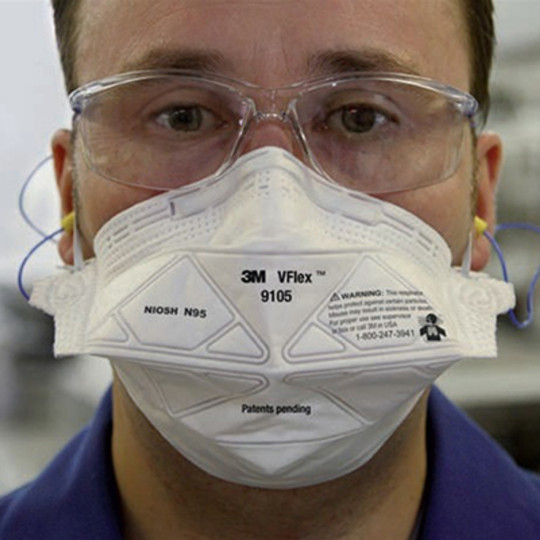
Honeywell DF300
Color Options: No Size Options: No NIOSH: Yes Manufacturer: Honeywell
Amazon: $34.24 for 50
Amazon.com: Honeywell Safety DF300 N95 Flatfold Disposable Respirator- Box of 50, White,One Size : Tools & Home Improvement

Donations (Free)
Project N95 has a free mask program for those in need. https://www.projectn95.org/free-masks/
—————————————————————
Certification Type
GB 2626-2019 (KN95)
95% or higher filtration. Other specific standards set by China. Usually manufactured and certified in China.
https://www.projectn95.org/kn95-mask-guide/
https://research.hktdc.com/en/article/NDA4MTMxMzYz
NIOSH (N95)
95% or higher filtration. Other specific standards set by the United States. Manufactured and certified in the United States.
https://www.cdc.gov/niosh/docs/2021-124/pdfs/2021-124.pdf
Other
Labels that indicate set standards, manufacture, and certification in other countries.
https://www.dol.gov/newsroom/releases/osha/osha20200403-2
https://www.osha.gov/laws-regs/standardinterpretations/2020-04-03-0
Filtration Test Results
CDC Testing
https://www.cdc.gov/niosh/npptl/respirators/testing/NonNIOSHresults.html
Third-Party Testing
Mask Nerd: https://docs.google.com/spreadsheets/d/1M0mdNLpTWEGcluK6hh5LjjcFixwmOG853Ff45d3O-L0/htmlview#gid=1976839763
Armbrust: Comprehensive Mask Testing – Armbrust American (armbrustusa.com)
#covid#covid pandemic#long covid#covidー19#covid19#covid 19#covid isn't over#coronavirus#pandemic#mask#face mask#mask up
2 notes
·
View notes
Text
Air Purifier Market Growth Drivers and Emerging Technologies
The global air purifier market size is expected to reach USD 25.58 billion by 2030, registering a CAGR of 7.1% from 2024 to 2030, according to a new report by Grand View Research, Inc. The market is primarily driven by increasing air pollution levels, coupled with the outbreak of the COVID-19 pandemic and the rising awareness pertaining to the benefits of air purifiers. Air purifiers assist in eliminating various health hazards caused by poor air quality by removing contaminants, including dust, smoke, and pollen. In addition, these products aid people suffering from asthma, airborne allergies, and other respiratory conditions. Thus, increasing health awareness among consumers is expected to drive the product demand over the forecast period.
Lockdown measures to curb the spread of COVID-19 and the stay-at-home and work-from-home norms have boosted the demand for air purifiers in residential applications. Furthermore, the demand for air purifiers increased in healthcare and other commercial facilities amidst the pandemic owing to their ability to limit the spread of infectious diseases. New product developments and technological advancements amid the COVID-19 pandemic are anticipated to augment the market growth. For instance, in September 2020, Aurabeat Technology Limited, a Hong Kong-based company, introduced Aurabeat AG+ Silver Ion Plasma Sterilization Air Purifier, which can eliminate more than 99.9% of COVID-19 within 30 minutes.
Wildfires and stubble burning that are increasingly found in the U.S., Australia, and India are some of the key reasons for causing air pollution. The smoke has several health implications such as eye and respiratory tract infection, lung infection, bronchitis, and heart failure. This has prompted consumers to buy air purifiers and is likely to augment the market growth over the forecast period. The pandemic provided an opportunity for companies with higher cashflows to acquire air purifier companies resulting in increased activity in the market. For instance, in November 2021, iRobot Corporation acquired Aeris Cleantec AG in a USD 72 Million all-cash deal in a bid to strengthen its portfolio of intelligent home innovation solutions.
Air Purifier Market Segmentation
Grand View Research has segmented the global air purifier market report based on technology, application, coverage range, sales channel, type, and region
Air Purifier Technology Outlook (Revenue, USD Million, 2018 - 2030)
High Efficiency Particulate Air (HEPA)
Activated Carbon
Ionic Filters
Electrostatic Precipitator
Others
Air Purifier Coverage Range Outlook (Revenue, USD Million, 2018 - 2030)
Below 250 Sq. Ft.
250-400 Sq. Ft.
401-700 Sq. Ft.
Above 700 Sq. Ft.
Air Purifier Sales Channel Outlook (Revenue, USD Million, 2018 - 2030)
Online
Offline
Hypermarkets/Supermarkets
Retail Stores
Specialty Stores
Others
Air Purifier Type Outlook (Revenue, USD Million, 2018 - 2030)
Standalone/Portable
In-duct/Fixed
Air Purifier Application Outlook (Revenue, USD Million, 2018 - 2030)
Commercial
Retail Shops (Mercantile)
Offices
Healthcare Facilities
Hospitality
Schools & Educational Institutions
Laboratories
Transport (railway stations, metros, bus stops, airports)
Others
Residential
Industrial
Air Purifier Regional Outlook (Revenue, USD Million, 2018 - 2030)
North America
US
Canada
Mexico
Europe
Germany
France
UK
Asia Pacific
China
Japan
South Korea
Singapore
Malaysia
Central & South America
Brazil
Middle East & Africa
Saudi Arabia
Key Companies profiled:
Honeywell International, Inc.
IQAir
Koninklijke Philips N.V
Unilever PLC
Sharp Electronics Corporation
Samsung Electronics Co., Ltd.
LG Electronics
Panasonic Corporation
Whirlpool Corporation
Dyson
Carrier
Recent Developments
In January 2024, COWAY CO., LTD. launched Airmega 100. It has a 360° air intake and a 3-stage HEPA filtration system that effectively removes harmful pollutants and purifies the air within an 810-square-foot space every hour. The product has a real-time air quality indicator, energy-saving technology, auto mode, and a precise particle sensor, which are some of the important features of this new air purifier.
In February 2023, the company introduced a new carbon air purifier that uses UV technology to promote healthy indoor air quality. This system helps eliminate unwanted odors, gases, and volatile organic compounds from the air inside the home. Additionally, the technology reduces the growth of microorganisms, such as viruses and bacteria, on the evaporator coil.
In August 2022, IQAir launched a smart slim bionic air purifier Atem X. This air purifier, Atem X was developed to combine four seemingly incompatible characteristics: powerful air purification, quiet operation, low energy consumption, and a slim design.
Order a free sample PDF of the Air Purifier Market Intelligence Study, published by Grand View Research.
0 notes
Text
Also preserved on our archive
An astonishingly simple and comprehensive guide to avoiding airborne illness while traveling. Many of these tips work for trips to the pharmacy or grocery store too. Stay safe out there!
By Korin Miller
Whether you’re traveling domestically or heading abroad, feeling your best at your destination means you’ll get the most out of your trip. Unfortunately, COVID-19 is still out there, and cases are expected to climb again as we head into the winter months. By now you’re likely aware of basic COVID prevention strategies, but air travel presents unique challenges that can be tricky to navigate.
Luckily, you can take steps to lower the odds of picking up the illness on your next flight. To help you do just that, we asked doctors and health policy researchers how they lower their COVID risk while flying. Here’s what they recommend.
Wear a mask—before you’re even on the plane Many of us know this already, but it’s worth recalling: Research has found that wearing a well-fitting, high-quality mask like an N95 or KN95 lowers your chances of picking up COVID-19 by 83%, according to the Centers for Disease Control and Prevention. But when you wear a mask during your travels matters, says William Schaffner, MD, an infectious disease specialist and professor at the Vanderbilt University School of Medicine.
“You really want to use your mask consistently around others, whether you’re in the airport or on that plane,” he says. Thomas A. Russo, MD, professor and chief of the Division of Infectious Diseases at the University at Buffalo’s medical school, agrees. “Think about the whole process when you fly—going through the airport, checking in, boarding the plane, and being on the plane—you’re going to interact with people from all parts of the world… There’s a risk you might get COVID,” he says.
You can help protect yourself by always keeping your mask on—and wearing a relatively new one. Compared to a mask that’s gotten a lot of use, a fresh one will fit more snugly around the nose, cheeks, and chin and, in turn, catch particles more effectively.
Put the air vent to good use If you prefer not to wear a mask, you should take steps to protect yourself in other ways. For example, after you get to your seat, adjust the vent so the air blows over your face, suggests Sheldon H. Jacobson, PhD, a University of Illinois Urbana-Champaign professor and researcher whose work includes using data-driven risk assessments to inform public health policy.
Dr. Jacobson says most airplanes use high-efficiency particulate air (HEPA) filters that catch microbes. Plus, cabin air is refreshed every few minutes, and a good portion comes from outside the aircraft. As a result, what blows out of the vents is pretty fresh. This strategy also keeps the air around you moving faster, meaning there’s less time for you to inhale any possible germs in the cabin, according to Dr. Jacobson. Still, if the person sitting next to you is coughing and sneezing, it’s best to wear a mask if you have one, he says. The filtration system can only do so much in that instance—and it’s not always on before takeoff and after landing.
Be mindful about how you eat and drink If you can, Dr. Russo suggests eating before you get to the airport to lessen the number of times you’ll need to remove your mask when you’re around other people. If you need to dine at the airport, Dr. Schaffner recommends looking for seating away from crowded areas.
When masks were still required for air travel, the suggested strategy for eating and drinking on board was to wait until your fellow fliers finished their snacks and refreshments. But now, Dr. Russo points out, the people around you may not mask up at all. Instead, he suggests dropping your mask, taking a sip or bite, and immediately pulling it back up. This lowers the odds you’ll breathe in viral particles that may be floating around, he explains.
Plan your vaccine around your trip Dr. Schaffner and Dr. Russo recommend getting the updated COVID-19 vaccine about two weeks before your trip. “It’s a good strategy,” Dr. Russo says. It usually takes 14 days or so for your body to build up immunity to COVID after getting vaccinated, according to the World Health Organization. This means your body should be ready to fight the virus by the time you fly, Dr. Russo says. Immunity also fades over time, making the timing of your shot important, he says.
Wash your hands…a lot Experts say you’re more likely to get COVID-19 from breathing in infectious droplets and particles than from touching things. But there’s still a chance you could get sick if you happen to touch a contaminated surface and then your eyes, nose, or mouth.
“What we’ve learned is that transmission from this virus from inanimate objects is very low, but it’s not zero,” Dr. Russo says. That’s why he recommends good hand hygiene while flying. You should wash your hands with soap and water, making sure to scrub for at least 20 seconds, and do so often: before and after security, whenever you use the bathroom, and before eating or touching your face. Hand sanitizer is also a good option in a pinch, Dr. Russo says. But he stresses that keeping your hands clean shouldn’t replace masking up. “It’s much, much less helpful than wearing a mask,” he says.
#mask up#covid#pandemic#public health#wear a mask#covid 19#wear a respirator#still coviding#coronavirus#sars cov 2
220 notes
·
View notes
Text
Filter Vessels and Heat Exchangers: Key Solutions for Industrial Applications in India
In the industrial landscape of India, where manufacturing, petrochemical, and processing industries are booming, efficient filtration and heat exchange systems are paramount. As a trusted Filter Vessel and Heat Exchanger Manufacturer in India, Gas Processing takes pride in delivering world-class solutions to meet the dynamic needs of various industries.

What Are Filter Vessels?
Filter vessels are essential components in industrial filtration systems. They are designed to remove impurities, contaminants, and unwanted particles from liquids and gases, ensuring smooth operational processes and high-quality end products.
Key Applications of Filter Vessels:
Oil and Gas: Filtration of crude oil, natural gas, and other petroleum products.
Chemical Processing: Ensuring purity in chemical reactions by filtering solvents and reactants.
Water Treatment: Removing sediments, particulates, and impurities from water for industrial or municipal use.
At Gas Processing, our filter vessels are engineered with robust materials to withstand high pressure and temperature, ensuring reliability and longevity.
Heat Exchangers: The Heart of Thermal Systems
Heat exchangers play a vital role in transferring heat between two or more fluids without mixing them. They are critical in energy conservation, optimizing processes, and maintaining system efficiency.
Types of Heat Exchangers We Manufacture:
Shell and Tube Heat Exchangers: Ideal for high-pressure applications and effective heat transfer.
Plate Heat Exchangers: Compact and efficient, suitable for low to medium pressure systems.
Air-Cooled Heat Exchangers: Perfect for industries where water resources are limited.
Applications of Heat Exchangers:
Power Plants: Managing thermal energy in steam and gas turbines.
Chemical Industry: Facilitating heat exchange in chemical reactions and cooling systems.
Food and Beverage: Ensuring precise temperature control in processing systems.
Why Choose Gas Processing?
Customization: We design filter vessels and heat exchangers tailored to your specific requirements, ensuring seamless integration into your systems.
High-Quality Materials: Our products are manufactured using premium-grade steel and alloys to guarantee durability and performance.
Compliance with Standards: All our products adhere to international standards like ASME, ISO, and TEMA.
After-Sales Support: Our dedicated team offers comprehensive support, from installation to maintenance.
The Role of Filter Vessels and Heat Exchangers in Sustainability
In today’s environmentally conscious world, industries are prioritizing energy efficiency and waste reduction. Filter vessels help maintain environmental compliance by filtering out pollutants, while heat exchangers contribute to energy savings by optimizing thermal management systems. At Gas Processing, our solutions align with the principles of sustainability, helping industries achieve their green goals.
Industries We Serve
Oil and Gas
Chemical and Petrochemical
Power Generation
Food and Beverage
Pharmaceutical
Partner with Gas Processing Today!
As a leading Filter Vessel and Heat Exchanger Manufacturer in India, Gas Processing is committed to providing innovative and reliable solutions that empower industries to operate efficiently. With our state-of-the-art manufacturing facilities and a team of skilled engineers, we ensure top-notch quality and unmatched performance.
For more information on our filter vessels and heat exchangers, contact us today and experience the Gas Processing advantage.
0 notes
Text
The Importance of a Reliable Kitchen Exhaust Ducting System for Commercial Kitchens
In the fast-paced environment of a commercial kitchen, maintaining optimal air quality and safety is paramount. One essential component that ensures this is the kitchen exhaust ducting system. Designed to remove heat, smoke, grease, and odors, a well-maintained kitchen exhaust ducting system plays a critical role in keeping your kitchen functional, safe, and compliant with regulations. At WCT Systems, we specialize in providing top-notch solutions tailored to meet the unique needs of your kitchen.
What Is a Kitchen Exhaust Ducting System?
A kitchen exhaust ducting system is an interconnected series of ducts, fans, and vents designed to extract polluted air from the kitchen and release it outside. This system is crucial for regulating indoor air quality, reducing fire risks, and ensuring the comfort and safety of kitchen staff. The ducting system typically consists of:
Hood: Captures smoke and grease particles.
Ducts: Channel the contaminated air to the outside environment.
Fans: Facilitate the movement of air through the system.
Filters: Trap grease and other particles to prevent clogging and maintain efficiency.
Why Is the Kitchen Exhaust Ducting System Vital?
Improves Air Quality: In a commercial kitchen, cooking processes release smoke, grease particles, and odors into the air. Without a proper exhaust system, these contaminants can accumulate, leading to poor air quality and health issues for employees. A reliable Kitchen Exhaust Ducting System effectively removes these pollutants, ensuring a clean and safe working environment.
Reduces Fire Hazards: Grease buildup in the ductwork is one of the leading causes of kitchen fires. A well-maintained exhaust system equipped with effective grease filters minimizes the risk of fire by preventing grease accumulation.
Enhances Ventilation: Proper ventilation is critical for maintaining a comfortable temperature in the kitchen. By removing excess heat, the kitchen exhaust ducting system helps maintain a cooler environment, which is essential for staff productivity and comfort.
Ensures Regulatory Compliance: Local health and safety regulations often mandate the installation of a certified kitchen exhaust system. Partnering with experts like WCT Systems ensures your kitchen is compliant with these regulations, avoiding potential fines and penalties.
Key Features of a High-Quality Kitchen Exhaust Ducting System
Durable Materials: Stainless steel is the preferred choice for ducting systems due to its resistance to heat, corrosion, and grease buildup. A high-quality system ensures longevity and reliability.
Custom Design: Every kitchen has unique requirements. A customized kitchen exhaust ducting system ensures optimal performance, tailored to the layout and size of your kitchen.
Efficient Filters: Effective grease and particulate filters are crucial for reducing maintenance needs and enhancing fire safety.
Powerful Fans: Fans are the heart of the system. High-performance fans ensure efficient removal of air pollutants and maintain steady airflow.
Maintenance Tips for Your Kitchen Exhaust Ducting System
Regular Cleaning: Clean the ducts and filters regularly to prevent grease buildup and maintain optimal airflow. Professional cleaning services ensure thorough removal of grease and debris.
Inspection and Repairs: Schedule routine inspections to identify wear and tear or potential issues. Addressing problems early prevents costly repairs and ensures continuous operation.
Upgrade Components When Needed: Over time, components like fans and filters may wear out. Replacing outdated parts improves efficiency and safety.
Why Choose WCT Systems for Your Kitchen Exhaust Needs?
At WCT Systems, we are committed to delivering comprehensive solutions for all your kitchen exhaust ducting system requirements. With years of experience, we offer:
Expert Consultation: Tailored advice to design the perfect system for your kitchen.
Quality Installation: Skilled professionals ensure seamless installation of ducting systems.
Ongoing Support: Maintenance services to keep your system in top condition.
Compliance Assurance: Systems designed to meet all regulatory standards.
Conclusion
A reliable kitchen exhaust ducting system is an investment in the safety, efficiency, and compliance of your commercial kitchen. By partnering with WCT Systems, you can ensure your kitchen operates at its best, providing a safe and comfortable environment for your team. Whether you’re setting up a new kitchen or upgrading an existing system, our team is here to help. Contact us today to learn more about our services and how we can enhance your kitchen’s performance.
0 notes
Text
Bag Filters Media: The Heart of Efficient Dust Collection
In industrial settings, dust collection is crucial for maintaining a safe and healthy work environment, protecting equipment, and ensuring product quality. At the heart of any efficient dust collection system lies the bag filter media. This critical component plays a vital role in capturing particulate matter, ranging from fine dust particles to larger debris.
What is Bag Filter Media?
Bag filter media, as the name suggests, is the material used to construct the filter bags within dust collection systems. These bags are typically cylindrical or rectangular and are suspended within a filter housing. As air or gas passes through the bags, the filter media traps dust particles, allowing clean air to escape.
Key Factors Influencing Bag Filter Media Performance:
Filtration Efficiency: The ability of the media to capture particles of different sizes. High-efficiency media can capture even the smallest particles, ensuring clean air emissions.
Dust Holding Capacity: The amount of dust the media can hold before it becomes clogged and requires cleaning or replacement. A high dust holding capacity minimizes downtime and reduces maintenance costs.
Air-to-Cloth Ratio: This ratio determines the amount of air passing through a given area of filter media. A balanced air-to-cloth ratio ensures optimal filtration efficiency and minimizes pressure drop across the filter.
Chemical Resistance: The ability of the media to withstand exposure to various chemicals and corrosive substances present in the process stream.
Temperature Resistance: The ability of the media to withstand high temperatures without degrading or losing its filtration efficiency.
Abrasion Resistance: The ability of the media to resist wear and tear caused by the movement of dust particles.

Choosing the Right Bag Filter Media:
Selecting the appropriate bag filter media depends on several factors, including:
Type of Dust: Particle size, shape, and chemical composition.
Application: Industry, process, and specific environmental conditions.
Airflow Requirements: Volume and velocity of the air or gas stream.
Temperature and Pressure Conditions: Operating temperature and pressure within the dust collection system.
Why Choose PARK NON WOOVEN for Your Bag Filter Media Needs?
PARK NON WOOVEN is a leading manufacturer and supplier of high-quality non-woven fabrics, including those used in the production of bag filter media. We offer:
Superior Quality: Our non-woven materials are meticulously crafted to ensure optimal filtration efficiency and durability.
Customization Options: We can tailor our products to meet specific filtration requirements, including particle size, temperature resistance, and chemical resistance.
Competitive Pricing: We offer competitive pricing without compromising on quality.
Excellent Customer Service: Our experienced team is dedicated to providing exceptional customer support and technical assistance.
Contact Us Today
To learn more about bag filter media and how PARK NON WOOVEN can help you optimize your dust collection systems, contact us today. Our experts will be happy to discuss your specific needs and provide a customized solution.
[email protected] 0124-4816111 Corporate Office: Park Non Woven Pvt. Ltd., Gurugram, HR
#pet acoustic panel#breather fabric#compressor felt#light weight insulation#fiber glass felt#non woven battery gaunlets#high efficiency media#pp + pet felt#plastic extrusion profile#lint free wipes
0 notes
Text

Let Technology Serve Life: Enhance Your Health with Jerdazen Air Purifiers
In our quest for healthier and more sustainable living, technology plays a crucial role. Discover how Jerdazen integrates technology into everyday life.
Behind the Technology:
Jerdazen air purifiers use a variety of filtration technologies to cleanse the air of pollutants. Their most effective feature is the High Efficiency Particulate Air (HEPA) filter, capturing particles as small as 0.3 microns—including dust, pollen, mold spores, and bacteria—with 99.97% efficiency. Additionally, Jerdazen purifiers incorporate activated carbon filters to adsorb chemicals and odors, further purifying the air from volatile organic compounds (VOCs) and other pollutants.
More Than Just Cleaning Air:
Jerdazen also integrates advanced technologies like UV and negative ions. UV technology is especially effective at killing bacteria and viruses, adding an extra layer of protection against airborne diseases.
Impact on Health and Wellbeing:
The direct benefit of clean air is the reduction of allergy and asthma triggers. Air purifiers significantly decrease the presence of airborne allergens and irritants. Furthermore, studies indicate that reducing exposure to particulate matter can lower the risk of long-term health issues such as cardiovascular diseases and even type-2 diabetes.
Environmental Impact
By improving indoor air quality, air purifiers also reduce the need for frequent ventilation, especially in climates that require year-round heating or air conditioning, leading to significant energy savings and a reduced carbon footprint.
Jerdazen's Vision:
The development of air purifiers shows how technological progress is directly linked to improving our lifestyles. Indeed, Jerdazen's core mission is to use technology to enhance your life.
2 notes
·
View notes
Text
How to Improve Indoor Air Quality with HVAC Systems in Louisville, KY

Indoor air quality is more important than ever, especially in homes where the HVAC system runs year-round. In Louisville, KY, with its seasonal temperature fluctuations, maintaining clean and healthy air is essential for your comfort and well-being. In this guide, we'll explore practical ways to improve indoor air quality with your HVAC system, including the importance of duct cleaning in Louisville, KY.
Why Indoor Air Quality Matters
The air inside your home can have a significant impact on your health and overall comfort. Poor indoor air quality can lead to various health issues, such as allergies, respiratory problems, and fatigue. Your HVAC system plays a crucial role in maintaining air quality by filtering out pollutants and circulating clean air throughout your home.
Common Indoor Air Pollutants
Dust and Pet Dander: These can trigger allergies and asthma symptoms.
Pollen: Pollen particles can enter your home through windows and doors.
Mold and Mildew: Damp areas in your home can encourage mold growth.
Chemical Pollutants: Household cleaning products, paint fumes, and other chemicals can affect air quality.
How Your HVAC System Affects Indoor Air Quality
Your HVAC system is your home's first line of defense against indoor air pollutants. However, if not maintained properly, it can also contribute to poor air quality. Here's how your HVAC system can help or hinder indoor air quality:
1. Air Filters
Your HVAC system’s air filter is designed to trap dust, pollen, and other airborne particles. Replacing your filter regularly can improve air quality and prevent pollutants from circulating in your home.
Tip: Use a high-efficiency particulate air (HEPA) filter to capture smaller particles.
2. Ductwork
Ducts distribute conditioned air throughout your home. Over time, they can collect dust, dirt, and other contaminants, reducing air quality and system efficiency. This is why duct cleaning in Louisville, KY, is essential for maintaining clean air.
Tip: Schedule professional duct cleaning every few years to keep your HVAC system running smoothly.
3. Humidity Control
Your HVAC system can also help regulate indoor humidity levels. High humidity can encourage mold growth, while low humidity can cause dry skin and respiratory issues.
Tip: Consider adding a dehumidifier or humidifier to your HVAC system for optimal humidity control.
Ways to Improve Indoor Air Quality with Your HVAC System
Here are some actionable steps you can take to improve indoor air quality in your Louisville home:
1. Change Your Air Filters Regularly
Air filters trap dust, pollen, and other particles that would otherwise circulate through your home. Changing your filters every 1-3 months is a simple yet effective way to maintain good air quality.
2. Schedule Regular HVAC Maintenance
Routine maintenance ensures your HVAC system is operating efficiently and helps identify any issues that could impact air quality. A professional technician will inspect your system, clean components, and make necessary adjustments.
3. Keep Your Ducts Clean
Duct cleaning is essential for maintaining a clean air supply. Over time, dust, pet dander, and other contaminants can accumulate in your ductwork, reducing air quality and forcing your HVAC system to work harder.
If you're searching for duct cleaning in Louisville, KY, be sure to choose a reputable service provider to ensure thorough cleaning.
4. Use a Smart Thermostat
Smart thermostats can help you manage your HVAC system more efficiently. These devices can monitor air quality and alert you when it's time to change filters or schedule maintenance.
5. Control Humidity Levels
Maintaining proper humidity levels can prevent mold growth and reduce airborne allergens. Your HVAC system can play a significant role in keeping your home's humidity in check.
Tip: Aim for indoor humidity levels between 30% and 50% for optimal air quality.
6. Add an Air Purifier
An air purifier can provide an extra layer of protection by removing smaller particles that your HVAC system might miss. Portable units are available, or you can install a whole-home purifier that integrates with your HVAC system.
7. Keep Your Home Clean
A clean home contributes to better air quality. Dust surfaces regularly, vacuum carpets with a HEPA filter, and wash bedding frequently to reduce allergens.
The Role of Duct Cleaning in Improving Indoor Air Quality
Duct cleaning is often overlooked, but it plays a crucial role in maintaining healthy indoor air. Over time, dust, dirt, and other debris can accumulate in your ducts, which can:
Restrict Airflow: Reducing system efficiency and increasing energy costs.
Circulate Contaminants: Spreading dust, allergens, and other pollutants throughout your home.
Impact Health: Contributing to respiratory issues, allergies, and other health problems.
Regular duct cleaning can help address these issues and improve overall air quality in your home. If you haven’t had your ducts cleaned recently, it might be time to schedule a service.
Benefits of Clean Indoor Air
Maintaining good indoor air quality offers several benefits:
Healthier Living Environment: Reducing the risk of allergies, asthma, and respiratory issues.
Better Sleep: Clean air can improve sleep quality by reducing irritants in the air.
Lower Energy Costs: A well-maintained HVAC system operates more efficiently, saving you money on energy bills.
Extended HVAC Lifespan: Regular maintenance and clean ducts help your system last longer.
Conclusion
Improving indoor air quality with your HVAC system is essential for maintaining a comfortable and healthy home in Louisville, KY. By changing filters, scheduling regular maintenance, controlling humidity, and investing in professional duct cleaning, you can breathe easier knowing your home's air is clean and safe.
For more tips and services related to HVAC solutions, visit hvaclouisville.net to explore how you can improve your indoor air quality effectively.
1 note
·
View note